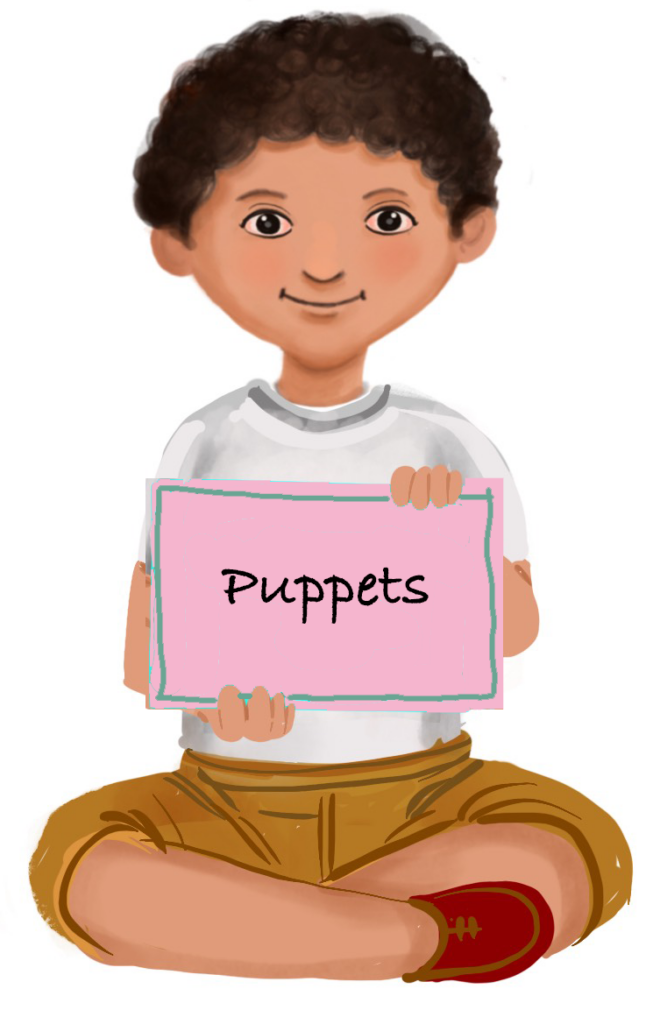
Snake
 Objective
Objective
To guide teachers in creating a puppet of a Snake for story-telling and other educational purposes.
Estimated time to create the Snake Puppet
30 to 45 Minutes
Materials required for creating Snake Puppet
- Black Sock – 1 No.
- Stiff White paper – Small piece
- Red colour paper
- Googly Eyes
- Pencil
- Glue or Fevicol
- Red marker pen
- Scissors
Preparation for activity
Keep all the materials ready in advance. If you are using hot glue instead of Fevicol, ensure it is suitably heated and ready for use.
Procedure
- Take a sock and cut off the portion above the ankle. Only the lower part of the sock will be used.
- Place the sock on a flat surface. Cut the toe section into a triangular shape to resemble the snake’s mouth.
- Take a small rectangular piece of stiff white paper. Fold it in half and insert it between the two layers of the sock, ensuring that the folded edge is placed inside.
- With the sock lying flat, draw the triangular outline of the mouth on the white paper using a pencil. Cut along the outline and trim the shape slightly, as it will be pasted inside the sock. Then, cut a red piece of paper in the same shape.
- Apply glue only along the edges of the white sheet and fix it inside the sock, aligned with the triangular mouth cut. Paste the red paper on the white base to resemble the inside of the snake’s mouth.
- Now, wear the sock on your hand and fix the googly eyes in position using glue.
- Cut a small tongue shape from the red paper and fix it so that it projects outwards from the upper part of the mouth.
- Allow it to dry for a few minutes. The puppet is now ready.
- To operate the snake puppet, wear it in your hand like a glove. Move your hand in a serpentine motion – up, down, rotating while opening and closing the mouth to bring the snake character to life.
Step by Step Pictures to create the puppet
Important Tips
- For this type of puppet, it is better to use regular socks rather than ankle socks and then cut them to the required length.
- Various soft puppets can be made in a similar way.
- Wedding cards or book covers can be good alternatives to drawing sheets.
- Reference images from drawing books or the internet can be helpful while designing the puppet.
- While creating the puppet, try to replicate the character illustration from the children’s textbook. Once the puppet is ready, refer to it by the character’s name from the textbook. This helps children connect with the content and improves recall.
- The teacher should use the puppet at an appropriate time, perhaps while narrating the story in a funny and humorous way. Intentional mistakes can also be made to encourage children to correct them, making the session more interactive and engaging.
Precautions
Precautions to be taken while manipulating finger puppets:
- Always keep the puppet’s face directed towards the audience.
- The Puppet Master’s focus should remain on the puppet at all times.
- Only the puppet that is ‘speaking’ should be animated; all other puppets should remain still.
 Notes to the Teacher
Notes to the Teacher
Puppets can be effectively used in the classroom to help children understand and express emotions. They are also valuable tools for teaching rhymes, songs, stories and more.
In addition to enriching learning experiences, using puppets supports the development of motor skills such as hand-eye coordination. They also enhance communication and social skills, improve focus and concentration, and help reinforce concepts and values in an engaging way.
Using the Learning Teaching Material
The teacher can demonstrate a puppet show as an example. Students can then be encouraged to create their own puppets and present a puppet show in the classroom.
Video: How to use Learning Teaching Material
| Source and Attribution of images All images used in the above Assets and Aids are originally created. |
| This digital material has been developed by the Sri Sathya Sai Vidya Vahini Inclusive Education Project, a unit of Sri Sathya Sai Central Trust, Prasanthi Nilayam, as a collaborative offering in the service of our nation. |